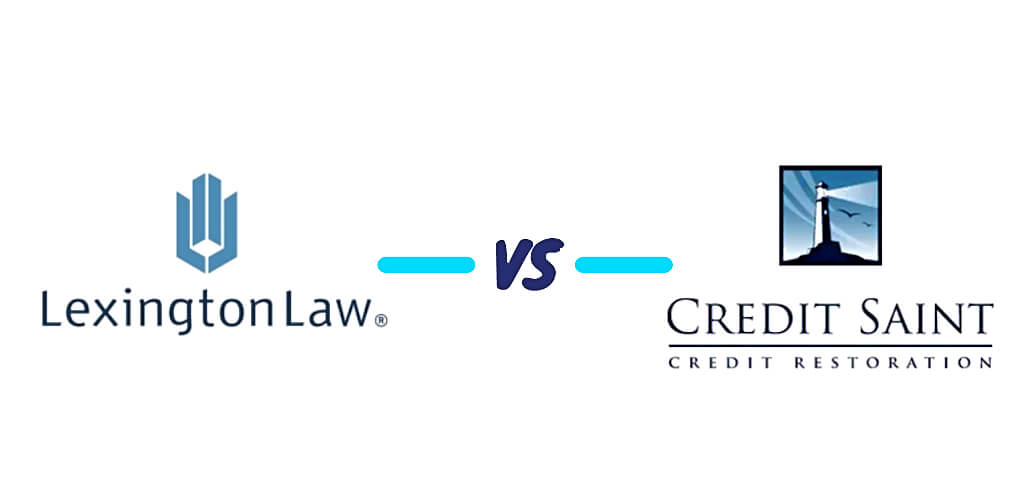How Long Does It Take to Repair Credit?
Disclaimer: We offer completely free content to our users. However, articles or reviews may contain affiliate links and we may earn a commission. Learn more about how we make money.
First things first, there’s a difference between credit repair and credit rebuilding. Repairing credit entails checking reports for erroneous entries and disputing them with CRBs. They must verify that all entries are accurate or remove them.

Repair may also involve working with creditors directly. For instance, writing goodwill letters to ask for voluntary removals. Or working out a Pay for Delete agreement. So, how long does it take to fix credit? The process takes anywhere from three to six months.
Rebuilding is a lengthy process. It entails paying off debts, paying down balances, or generating positive information. For instance, borrowers often apply for credit rebuilder loans. They generate histories of prompt monthly repayments to offset negative entries.
Let’s talk about repairing and rebuilding credit in-depth:
How Long Does It Take to Rebuild Credit?
Chances are, your report has an error. The Federal Trade Commission established that 1 in 5 people have credit report errors. Some sources put that figure at 79% of all reports.
Credit reports contain a lot of information. And each error has a different degree of severity. Consider an honest mistake such as reporting an account as “Settled in full” instead of “Paid in full.”
A “settled account” means the creditor accepted less money than was owed. While a fully paid account means that the borrower paid all their debt in full. Recently settled accounts may decrease scores by up to 100 points and have a shelf life of seven years.
The Fair Credit Reporting Act allows every person to review and challenge errors. There is no need to involve an attorney. Anyone can prepare and send dispute letters to the CRBs asking for removals. CRBs now accept online submissions — before, the dispute process was mail-based.
Looking for ways to fix credit scores without any help? Here are the steps and the estimated time they will take:
| Step | Action | Duration |
| 1 | Ordering copies of reports | 15 — 30 minutes |
| 2 | Analyzing each report to spot errors | 1 — 2 hours |
| 3 | Learning how to write dispute letters | 30 mins — 2 hours |
| 4 | Preparing & sending the first dispute letter (may take longer for mail) | 30 mins — 2 hours |
This is a rough estimate of the time taken to execute each action. There will be some learning curve when figuring out what works. *Golden tip: Check the following resources from the FTC:
- Sample Letter for Disputing a Debt Collection Notice
- Sample Letter for Disputing Errors on Your Credit Report
The hardest part of recovery is the waiting time. The CRBs respond to requests in about 45 days. They take up to 30 days to investigate the claims and verify the accuracy of entries. About 15 days are spent sending communications to and from.
Why does it make perfect sense to hire a repair company?
One of the ways to repair credit is to hire a credit repair company! Why? Well, the CRBs are not highly motivated to remove inaccuracies. Customers often report finding the process very hard and frustrating.
Repair firms are ready from day one to clean up your credit. They only take a monthly payment for it. It may mean saving time, spent figuring out how to write the best dispute letters.
CRBs will at times ask for documents and evidence that a repair firm can help prepare. Customers also work with experts who know how to get successful outcomes.
It’s the same reason for hiring a mechanic to fix a broken-down car. Sure, there are tutorials that describe various fixes in detail. All the parts are available downtown. But the auto shop will do the job more efficiently.
And don’t fall for scammy services! We reviewed industry leaders and ranked them based on features and effectiveness. Check this list of credit repair companies.
Will credit companies guarantee a faster process?
Not always, and a credible company will not make such a claim. That’s because the firms use the same dispute process. But consider that they quickly start disputing without the learning curve. Most use electronic dispute filing systems and have dedicated employees.
How Long Does Negative Information Stay on Credit Reports?
Negative information is any entry that can lower the score. Different scoring models will give different scores. The two most popular include FICO or VantageScore. About 90% of US lenders use the FICO® scoring formula.
“Staying on reports” refers to the shelf-life of an entry on the report. After it expires, the CRB must delete the entry. Now, here is a table showcasing the shelf-lives of common negative entries:
| Duration | Types of negative entries |
| Removal after 2 years | Hard inquiries |
| Removal after 7 years | Collections, Chapter 13 Bankruptcy, Judgements & liens, Late payments, Foreclosures, Repossessions, Charged-off accounts |
| Removal after 10 years | Chapter 7 Bankruptcy, |
Chapter 7 bankruptcies are longer-lived because the debtor has all their debts wiped out.
Scoring models keep changing and may have differences in scoring negative items. For instance, the FICO® Score 8 doesn’t include fully paid collections accounts. However, creditors choose the models to use and may not use the latest models.
The payment history contributes 35% during the score calculation. (The amount owed 30%, your credit history length 15%, credit mix 10%, and new credit 10%).
So, the payment history has the most impact. Now, a payment that was late for 60 days has a greater impact than one that was 30 days late. The severity of negative items decreases as they age. For instance, a late payment recorded 5 years ago has a lesser impact than a recent one.
Also, a hard inquiry impacts the score for the first 12 months. Though, it stays on reports for 24 months.
Some negative items are more damaging than others. For instance, repossessions, judgments, foreclosures, charged-off accounts, bankruptcies, and unpaid collections accounts.
Note that it’s generally harder to get a perfect score than it is to move from poor to good credit, for instance, from 500 to 660. The average time to rebuild credit ranges from 1 to 2 years.
4 Steps to Rebuild Your Credit Score
So, how long does it take to build credit? Rebuilding credit requires persistence and adopting healthier financial habits. Now, here are the most recommended rebuilding steps:

Step 1: Order free report copies & get a free score
Schedule it: First Week
We’re on week one on the road to better credit. Head over to annualcreditreport.com. The site issued free reports annually. As a result of the current pandemic, CRBs are now issuing free reports each week. Fill out their form, get the reports and start checking for:
- Unfair or wrongly reported entries
- Outdated information
Reports don’t come with the FICO® score. We recommend ordering it for free on Experian. They provide a report breakdown of each negative item along with tips for rebuilding credit.
Step 2: Make a plan to pay off existing debts — starting with accounts with the highest balances
Schedule it: Week Two
Paying off existing debts can boost credit. But only if done in a smart way. In certain situations, paying off existing debts and closing accounts can decrease scores. So, what do we recommend?
- Pay off accounts with the highest balances — It brings down the credit utilization rate (CUR). Aim for a CUR of 30% on revolving accounts (credit cards).
- Start planning how to clear collection accounts — If a creditor uses the latest FICO model, paid collection accounts will not impact scores.
- Negotiate for Pay for Delete — CRBs often discourage creditors from deleting items. But it’s a legal practice that can remove certain accounts.
To prevent a dip in scores, particularly before applying for a new loan to buy a house, keep the current credit mix. For instance, don’t pay off an installment loan and remain with revolving debt only. But don’t keep a problematic account open for the sake of avoiding a score decrease. It’s possible to recover by applying for new lines of credit.
Paying off debt can be a hassle, and we recommend free credit counseling. Credit counselors are great and friendly! They help people create a personalized debt management plan. It will be vital.
Step 3: Make a plan to reduce the credit utilization rate on credit cards
Schedule it: Week Three
Here is a simple way to understand the credit utilization rate. If the limit is $10,000, and the total outstanding balance is $5,000, the CUR is ($5,000/$10,000) x 100 = 50%.
For higher scores, keep the rate under 30%. Generally, the lower the CUR, the more points are for grabs. Some experts even recommend a 10% CUR. It indicates good credit management because the cardholder is not overspending. It’s also one of the fastest ways to rebuild credit.
More ways to improve the CUR, include:
- Get new credit cards. *Golden Tip: To manage several cards and prevent overspending, assign each card for one use. For instance, delegate a card for grocery shopping only.
- Ask the creditor to raise the limit.
- Keep accounts with zero balance open.
- Pay to zero each month. Don’t make the least allowed payments.
Owe a lot in card debt? Can’t manage all the repayments? Think of consolidating the credit accounts into one account. And only pay one monthly repayment. Specifically, check for “Balance transfer cards.”
Step 4: Start shopping for credit rebuilding products
Schedule it: Week Four
One of the best ways to rebuild credit is to start adding positive information to offset negative items. For instance, applying for a new loan and making payments on time. Now, it is not the quickest way to rebuild credit. But it works wonders in the long term.
“But I’m struggling with bad credit! And not getting approved!” Well, many creditors have developed credit rebuilding loans and secured credit cards — some of them come with 0% interest. They are marketed to people who want to improve bad credit.
How to Improve a Credit Score Fast?
To get your credit score up, find and dispute inaccurate negative entries. It only takes about 60 days to see improvements after the CRBs remove the wrong information.
Working with repair companies often means saving time, and this, in some way, speeds up the process. Looking for a reliable company to start working with right away? Our top-ranked repair firms include Lexington Law and Credit Saint.
Conclusion
The road to restoring your credit may seem long, tedious, and impossible. But don’t give up soon. There may be several surprises along the way. For instance, a wrongly reported recent late payment may be the reason the score is down by over 100 points. And don’t feel any pressure to subscribe to repair services.






